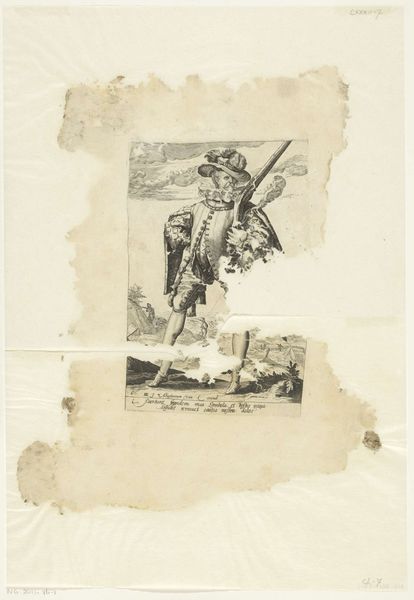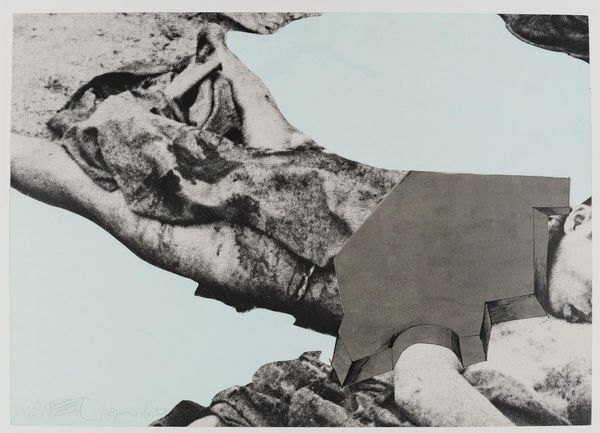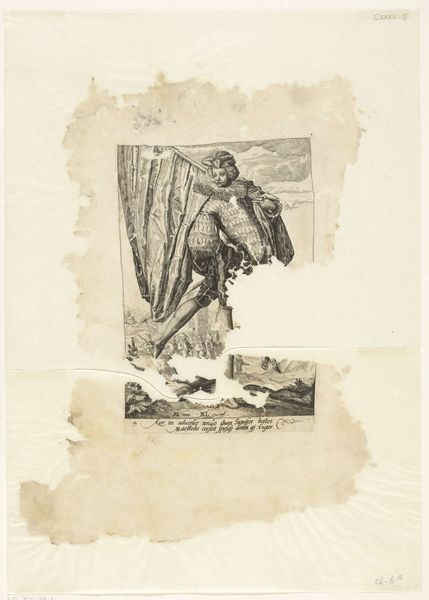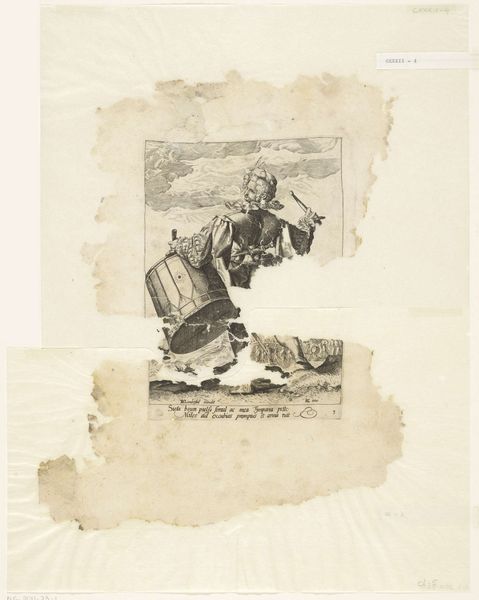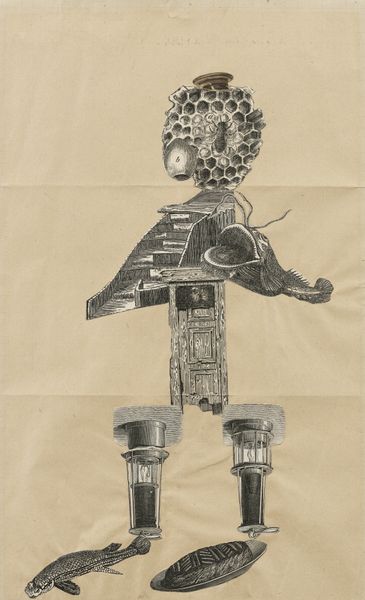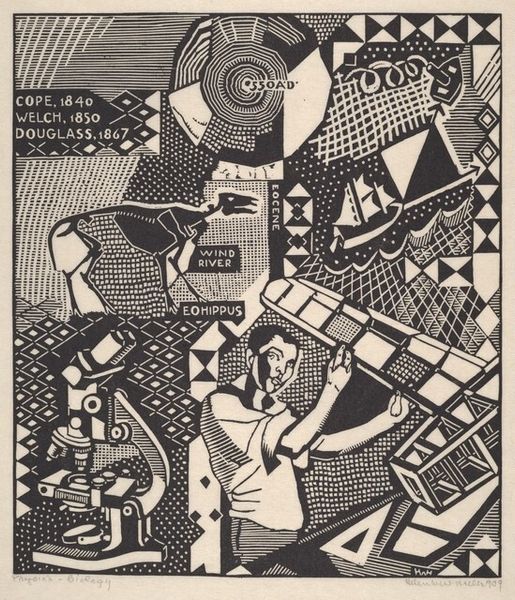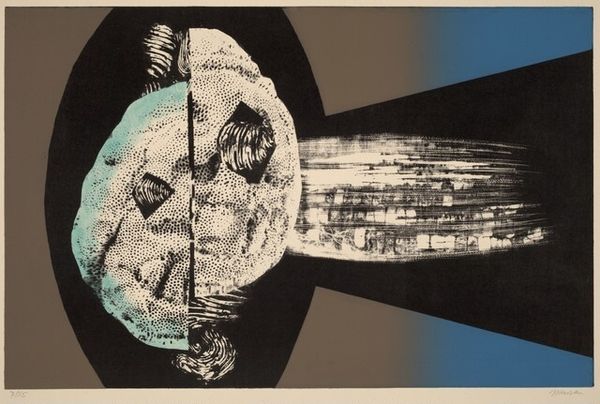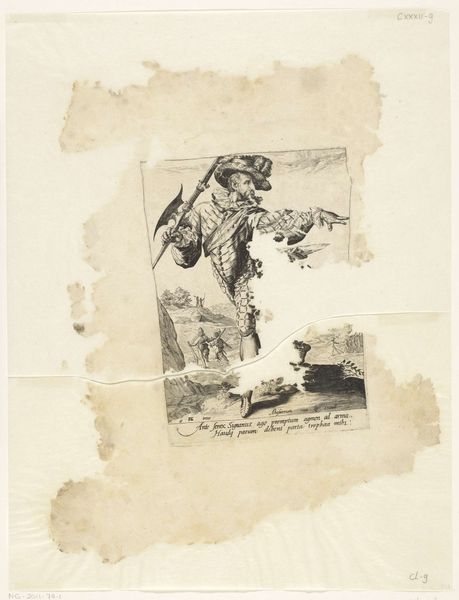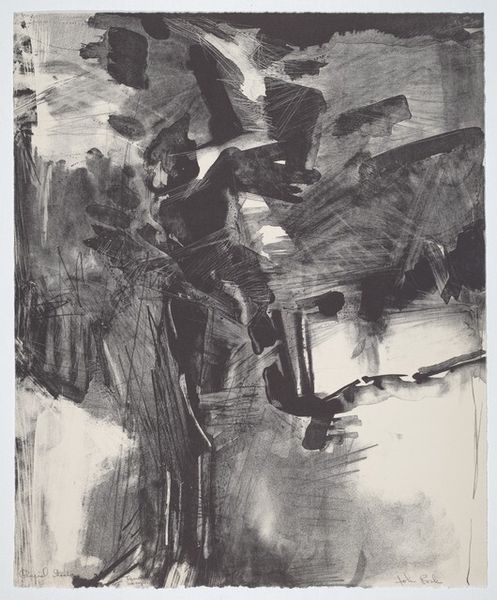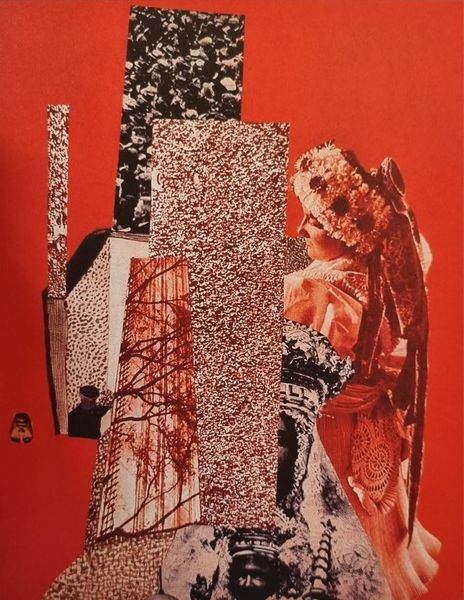
collage, photography, photomontage, montage
#
art-deco
#
collage
#
photography
#
photomontage
#
montage
#
bauhaus
#
surrealism
Dimensions: overall: 65 × 50.1 cm (25 9/16 × 19 3/4 in.) framed: 89.22 × 73.98 × 4.13 cm (35 1/8 × 29 1/8 × 1 5/8 in.)
Copyright: National Gallery of Art: CC0 1.0
Editor: Wow, this piece has an almost dreamlike quality. It's like fragments of different eras and emotions all swirling together. There's a kind of uneasy serenity about it that I find fascinating. Curator: Precisely. What you're picking up on resonates with the artistic climate of the time. We're looking at an untitled photomontage from 1930 by Marianne Brandt, an artist deeply embedded in the Bauhaus movement. She uses the collage medium and photographic elements to invite discussions about modernity. Editor: Modernity gone slightly askew, perhaps? I mean, those zeppelins floating over a city that's also erupting into smoke...and a chap in chains? It's a wild cocktail of images! Is she making a comment about progress, or the cost of it? Curator: Absolutely! Brandt was critiquing societal norms and gender roles within the rapid industrialization and social shifts of the Weimar Republic. That man entangled in chains becomes a symbol of societal constraints, economic duress, and perhaps the perceived entrapment of men by these very systems. Editor: And the woman’s face looking upwards amid what looks like explosions...It feels like she’s questioning everything. There’s a sense of vulnerability there too. Like a silent witness to the world going topsy-turvy. Curator: The woman can certainly be understood in that context. Given that Brandt often subverted conventional roles for women within design and artistic spaces, the face represents not only observation but also a subtle resistance to prescribed female passivity and silence. Editor: It’s so cleverly layered. And it's not just about aesthetics but communicating an underlying critique. The materials, the subjects...they all tie together so many complexities of that era. There is a certain energy about the collage style, that helps give urgency and focus. Curator: That’s a brilliant connection. This work shows Brandt grappling with issues of identity, the societal impact of rapid technological changes, and a kind of dystopian futurism... a critique as salient then as it remains today. Editor: I think seeing this made me want to look deeper into the complexities hidden beneath what society calls "progress" because it really speaks to me. It's chaotic, but beautifully thoughtful and haunting all the same! Curator: And it underlines that visual culture is interwoven into political and social reality, revealing how artworks actively negotiate dominant ideologies, rather than merely passively reflecting them.
Comments
No comments
Be the first to comment and join the conversation on the ultimate creative platform.
